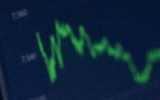
Organised crime groups pocket vast revenues, fuelling violence and corruption, the report said
Europeans spent at least 11.6 billion euros ($12.7 billion) in 2017 on illegal cannabis purchases, confirming marijuana as the largest drugs market in the 28-country European Union, the bloc's anti-drugs agency said on Tuesday.
In its annual report, the European Monitoring Centre for Drugs and Drug Addiction (EMCDDA) said the EU's overall narcotics market was worth at least 30 billion euros in 2017, up from 24 billion in 2013.
The global market for illicit drugs was estimated to be worth between $426 and $652 billion, the agency said, warning that its estimates about the EU market were conservative.
Illegal sales of herbal cannabis and its resin represented 39% of the EU's drugs market, up from 38% in 2013, with revenues for criminal organisations dwarfing those in legal markets.
Marijuana shops in California, the world's largest legal market for cannabis, had revenues worth around $2.5 billion last year, industry data show.
Cannabis consumed in the EU is increasingly produced there.
Imported resin comes mostly from Morocco, while Albania is a key exporter of herbal cannabis, the report said, warning that prices and potency were growing.
Cocaine is the second most consumed illegal drug in the EU, with sales generating revenues of at least 9 billion euros in 2017, while the heroin market was worth more than 7 billion euros.
"The European drug market is increasingly characterised by consumers having access to a wide variety of high-purity and high-potency products," the report said.
This reflects high levels of output globally and within the EU, with cocaine production in South America and heroin manufacturing in Afghanistan estimated to be at historically high levels, the EU agency said.
Organised crime groups pocket vast revenues, fuelling violence and corruption, the report said.
Some proceeds also go to militant organisations, the report said, with research showing narcotics among major sources of income for groups like West Africa's Boko Haram, Islamic State and Somalia's al-Shabaab.
It also warned of increasingly sophisticated laundering methods, including cryptocurrencies.
Bitcoin remains the most popular virtual currency for criminals, but some EU states have detected a growing use of currencies guaranteeing greater anonymity, including monero and zcash, the report said.
It also reiterated money-laundering risks posed by high-denomination banknotes, notably 200 and 500 euro notes, which are used by cash couriers to smuggle dirty money.
Because of concerns over crime, the 500 euro banknote is no longer being issued by the European Central Bank but remains legal tender, as cash-loving countries like Germany prefer not to outlaw it.
($1 = 0.9073 euros)
Hello, the comments you share on our site are a valuable resource for other users. Please respect other users and different opinions. Do not use rude, offensive, derogatory, or discriminatory language.
The floor is all yours.








